In the ever-evolving world of digital connectivity, Bluetooth technology has become a necessity for seamless wireless communication. When it comes to Bluetooth modules, the HC-05 and HC-06 are two of the most popular options on the market. But which one is better? Today, this guide will dive deep into the world of Bluetooth modules and compare the HC-05 and HC-06 to help you determine which module will suit your needs and preferences. So, get ready to unlock the true potential of your accessories to unravel the mysteries of the HC-05 vs. HC-06 Bluetooth modules.
What is a Bluetooth Module?
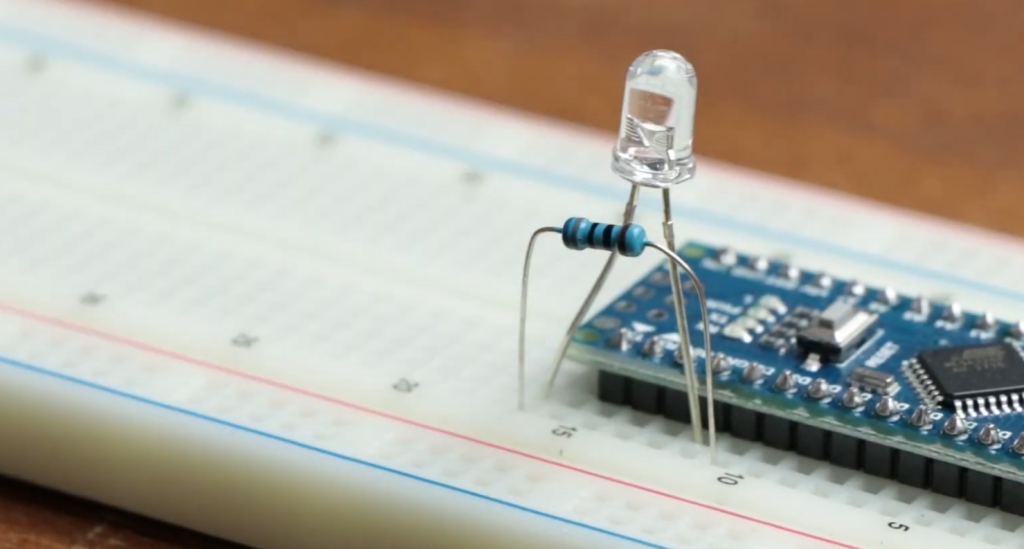
Bluetooth modules typically have a range of up to ten meters and the wireless connection is usually secure. This makes them an ideal choice for device-to-device communication, especially in applications where there is limited available space or power.
Bluetooth modules can also be used to connect devices together in a mesh network, allowing all connected devices to communicate with each other without requiring individual connections. This makes it possible to create device networks that are both reliable and efficient. Additionally, Bluetooth modules can be used to send data over long distances with minimal power requirements.
With the increasing popularity of wireless technology, Bluetooth modules have become a must-have for many products, including smart home systems, wearables, and healthcare devices. As these technologies continue to advance, Bluetooth modules are likely to become even more prevalent in many different types of applications [1].
Types of Bluetooth Modules
Bluetooth modules come in a variety of shapes, sizes and technologies. Some common types of Bluetooth modules include:
- Class 1 Bluetooth Modules:These modules are the most powerful type available on the market and have a transmission range of up to 300 meters. They use a low-level power consumption technology which makes them ideal for applications that require longer ranges or higher power usage.
- Class 2 Bluetooth Modules:These modules are the most popular type of Bluetooth module and offer a transmission range of up to 10 meters. They are powered by a low-level power consumption technology which makes them suitable for everyday use such as connecting phones and other devices to each other.
- Class 3 Bluetooth Modules: These modules have a transmission range of up to 1 meter and are usually used for short-distance connections such as those between devices in the same room. They are powered by low-level power consumption technology which makes them suitable for applications that need shorter connection times or lower power usage.
- Class 4 Bluetooth Modules: These modules have a transmission range of up to 10 meters and can be used for both short-distance connections as well as longer-range applications. They are powered by a higher power consumption technology which makes them suitable for applications that need longer connection times or higher power usage.
In addition to the different types of Bluetooth modules, there are also different versions of Bluetooth available on the market such as Bluetooth Low Energy (BLE) and Classic Bluetooth. BLE enables low-power, short-range connections and is ideal for applications such as wearable devices and connected home products. Classic Bluetooth enables longer-range connections and is suitable for applications such as streaming audio from a phone to a speaker.
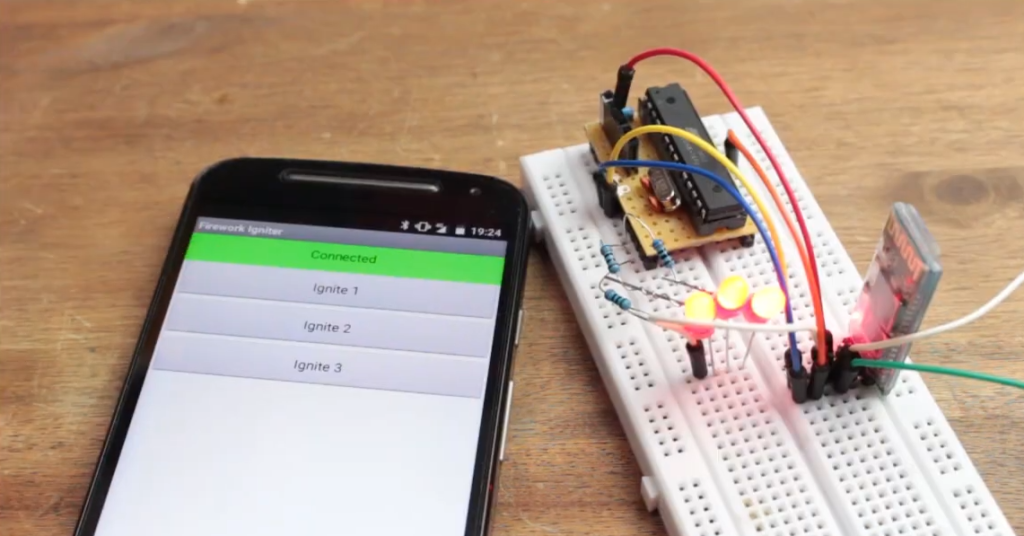
Finally, there are several types of antennae available that can be used to improve the performance of a Bluetooth module. These include omnidirectional antennae which can broadcast a signal in all directions, directional antennae which focus the signal in one direction, and high-gain antennae which are designed to provide a maximum range. The type of antenna used will depend on the application and environment in which the Bluetooth module is used [2].
Comparison Of HC-06 And Other Bluetooth Modules
HC-05
The HC-05 module is a Bluetooth SPP (Serial Port Protocol) module which means that it communicates with the serial port on your Arduino. It is also compatible with Android and iOS devices. The main difference between the two modules is that the HC-05 requires an AT command set for configuration, whereas the HC-06 does not require any AT commands to be sent to it. The HC-05 is more suitable for applications that require higher data transfer speeds since the Bluetooth signal can travel longer distances and support multiple connections at once.
HC-06
The HC-06 module is a Bluetooth SPP (Serial Port Protocol) module which means that it communicates with the serial port on your Arduino. It does not require any AT commands to be sent to it for configuration and can be used with both Android and iOS devices. The HC-06 is best suited for applications that require a low data transfer rate since the Bluetooth signal has a limited range, but still offers good connectivity.
HM-10
The HM-10 module is a Bluetooth Low Energy (BLE) module which means that it uses less power and can be used for applications that require a low data transfer rate. The HM-10 is compatible with both Android and iOS devices, but its main advantage over the HC-06 and HC-05 modules is that it supports multiple connections at once with different devices. This makes it ideal for applications that require multiple Bluetooth connections.
RN-42
The RN-42 module is a Bluetooth Classic (BT-Classic) module which means that it has higher data transfer speeds than BLE modules like the HM-10. It is also compatible with both Android and iOS devices. The main disadvantage of this module compared to other Bluetooth modules is that it requires an AT command set for configuration, just like the HC-05. However, it offers a better data transfer rate and can support multiple connections at once [3].
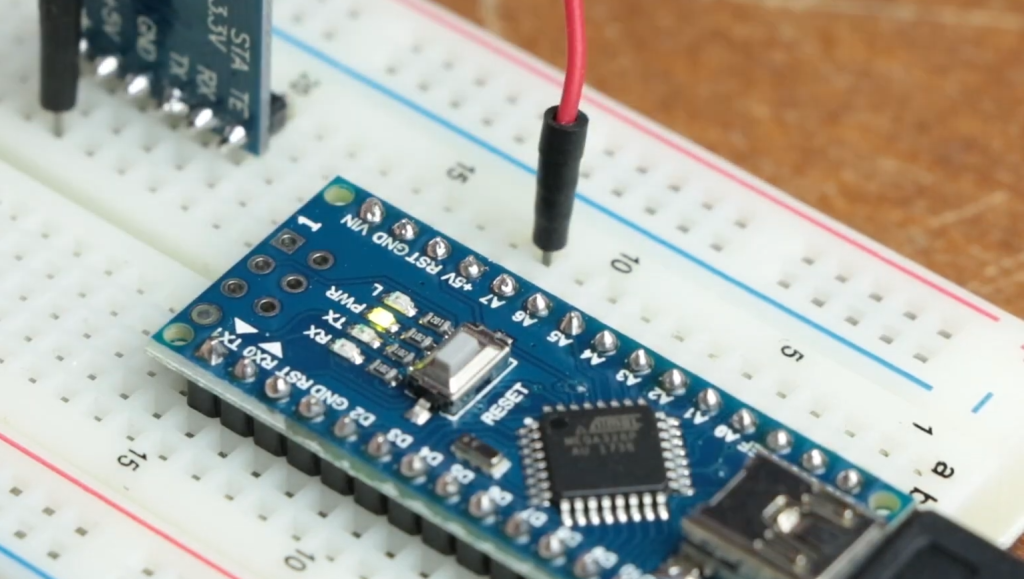
Contrast Between HC-06 And Other Modules
HC-06 Bluetooth module has certain advantages compared to other modules available in the market. The main advantage of this module is its relatively low cost. This makes it an attractive option for those looking for a low-cost yet efficient Bluetooth solution. Additionally, HC-06 is quite easy to configure and use as compared to other modules which require more technical knowledge for setup and usage.
Furthermore, the module offers faster connection speeds than many other modules in its class, allowing for faster data transfer and communication between devices. This makes it an ideal choice for applications that require quick response times or higher data throughputs. Lastly, the small size and low power consumption of this module make it suitable for use in applications where power requirements are limited or space is a constraint.
On the downside, the HC-06 Bluetooth module does not support certain features that can be found in more advanced modules such as voice prompts, pairing with multiple devices, etc. Additionally, its range is limited compared to other modules which makes it less suitable for applications requiring longer distances between two points. Lastly, interference from external sources can affect the performance of the module at times.
Overall, the HC-06 Bluetooth module is a good choice for applications that require an affordable and reliable solution for wireless communication. While it may not have all the features of more advanced modules, its lower cost and ease of use make it a compelling option for many users. With proper implementation and setup, this module can provide great performance in most scenarios.
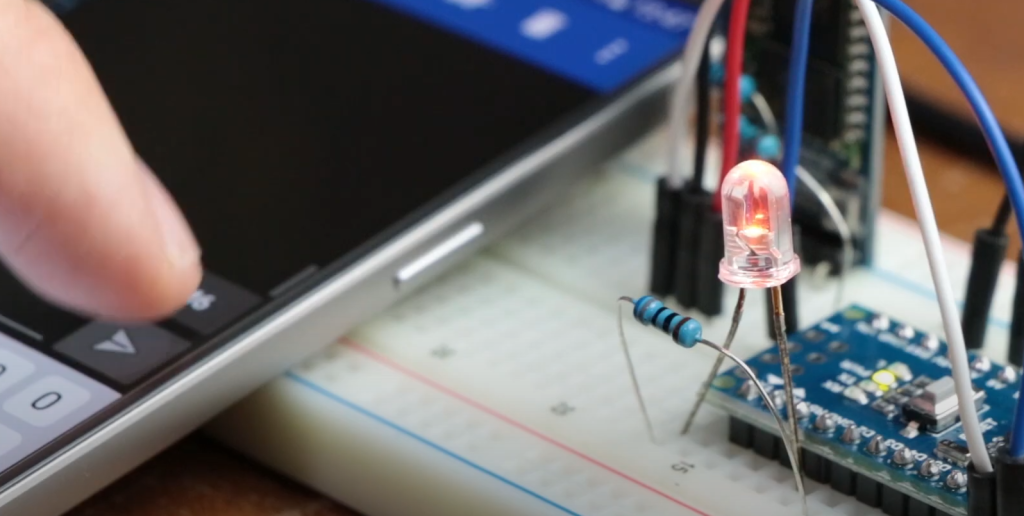
Advantages and disadvantages of Bluetooth Module
Bluetooth modules offer many advantages over traditional wired connections. They provide wireless technology that allows for different types of communication, including data transfer between devices, audio streaming, and more. Bluetooth modules are also typically more affordable than their wired counterparts and are easier to install. Additionally, they can be used in a variety of environments since they require no physical connection to operate.
However, there are some drawbacks to using Bluetooth modules. They can be susceptible to interference from other devices, which may disrupt communication. Additionally, they typically have a limited range and require specialized hardware or software for setup and maintenance. As with any technology, it’s important to research the specific requirements of your application before making a purchase.
Overall, Bluetooth modules provide a convenient and cost-effective way to connect devices wirelessly, although they have some limitations that should be taken into consideration. With the right choice of module, you can enjoy an efficient and reliable connection for your project.
To ensure safety when using Bluetooth technology, it is important to choose a device with built-in security features to prevent unwanted access and unauthorized use. Additionally, it is important to remember that wireless communication can be affected by environmental factors such as walls and other obstacles that may interfere with the signal strength. Taking these factors into account when choosing a Bluetooth module will help ensure that your connection remains secure and reliable.
Finally, while Bluetooth technology has come a long way in recent years, it is still important to regularly update your device’s firmware to ensure optimal performance. Regularly checking for available updates can help you take advantage of the latest features and bug fixes, allowing you to make the most of your Bluetooth module.
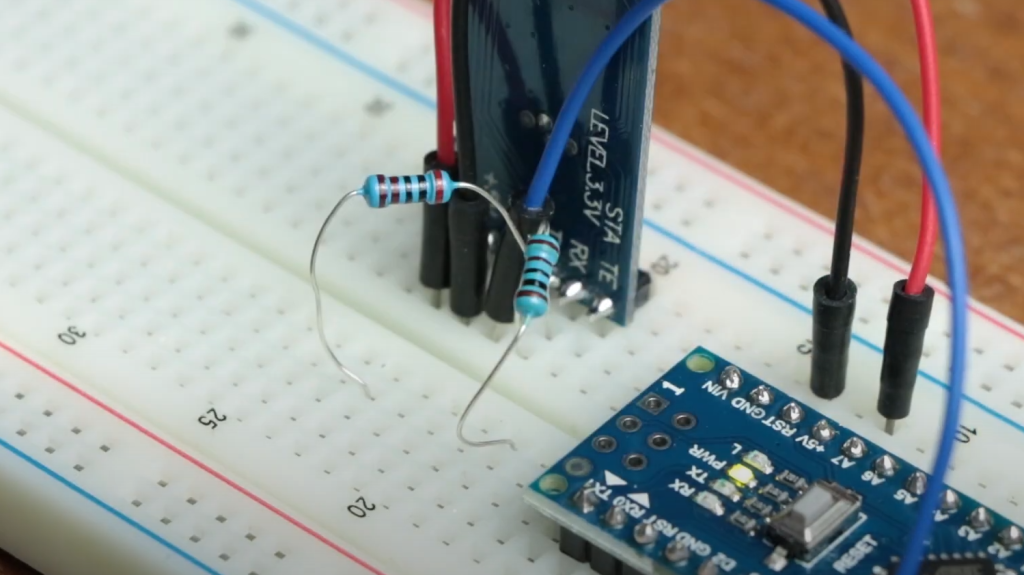
FAQ
What is the difference between HC 06 and HC-05 Bluetooth?
HC-06 module is slave only while the HC-05 module can be set to master and slave mode. HC-06 will accept connections from remote Bluetooth devices, but cannot initiate the connection itself. HC-05 on the other hand can both accept and initiate connections. In addition, HC-06 has a reduced communication speed compared to HC-05 which supports full-speed Bluetooth. The HC-06 also does not support all AT commands for configuration and settings as compared to the HC-05 module. Therefore, if you require a master/slave setup or want full-speed communication with more control over the connection, then the HC-05 is a better option.
What is the range of Bluetooth?
The maximum range of Bluetooth is up to around 30 meters (100 feet). However, this range can vary depending on the environment and power of the connected devices. Factors such as walls, interference from other electronic devices, or low battery levels can impact the range of connection. Typically, a connection in an open area with a good line-of-sight between two devices will have a greater range than a connection in a crowded area with many obstacles. Additionally, devices with higher power output will have longer ranges compared to lower-powered ones.
How can you tell the difference between HC-05 and HC-06?
The easiest way to tell the difference between HC-05 and HC-06 is by looking at their pinouts. The HC-05 has 8 pins while the HC-06 only has 6 pins. Additionally, the pinouts of both modules are quite different – with the notable differences being the UART (TX/RX) and Key (EN) pins on the HC-05. This makes it quite easy to differentiate between the two modules. Additionally, if you have access to both modules, then you can also check the firmware version of each one – which is usually displayed in plain text when connecting via serial port. The HC-05 typically has a higher firmware version than the HC-06.
What are the advantages of the HC 06 Bluetooth module?
The HC-06 Bluetooth module is a popular choice for many wireless projects, due to its low cost and easy setup. It can provide quick and reliable communication between two devices over short distances. Additionally, it supports full-speed Bluetooth, making data transfer faster than other options such as infrared or radio frequency (RF). Furthermore, the HC-06 can be configured to accept connections from only certain specific devices, adding an extra layer of security and preventing unauthorized access. Lastly, the HC-06 module is also compatible with a wide range of operating systems including Android, iOS and Windows, making it easy to integrate into existing networks.
What are the disadvantages of the HC 06 Bluetooth module?
The main disadvantage of the HC-06 module is its limited range. Compared to other wireless technologies such as Wi-Fi or RF, the maximum range of a Bluetooth connection is significantly lower (up to around 30 meters). Additionally, the HC-06 does not support all AT commands for configuration and settings as compared to the HC-05 module. Lastly, its low power output means that it can be easily disrupted by interference from other electronic devices, reducing its range further.
How many types of Bluetooth modules are there?
There are several types of Bluetooth modules available, depending on the application. The most common types include the HC-05 and HC-06, which are primarily used for simple communication between two devices over short distances. Additionally, there are also more advanced modules such as the HM-10 and CC2541, which offer more features such as longer range and faster speeds. These are typically used in more complex applications such as industrial automation or health monitoring systems. Lastly, there are also modules designed specifically for use with the Arduino platform, which provide an easy way to integrate Bluetooth functionality into existing projects.
Is it possible to connect two HC 06 modules?
Yes, it is possible to connect two HC-06 modules together. However, it requires a master/slave setup – where one device (the master) initiates the connection and the other (the slave) accepts it. Therefore, one of the HC-06 modules must be configured as the master, and then connected to the other module which is set to slave mode. To do this, you will need a laptop or PC with Bluetooth capabilities, as well as the appropriate software for programming and connecting the modules.
Can the HC-06 be used for long-range communication?
No, the HC-06 Bluetooth module is not suitable for long-range communication. Its maximum range is around 30 meters (100 feet), which is significantly lower than other wireless technologies such as Wi-Fi or RF. Therefore, it is better suited for short-distance communications between two nearby devices. Additionally, its low power output means that it can be easily disrupted by interference from other electronic devices, further reducing its range.
Is the HC-06 compatible with all devices and operating systems?
Yes, the HC-06 Bluetooth module is compatible with a wide range of devices and operating systems. It supports both Android and iOS smartphones, as well as Windows PCs. Additionally, it can also be used in conjunction with Arduino boards for easy integration into existing projects. However, there may be some compatibility issues when connecting to other types of devices or operating systems – so it is important to check the device specifications before attempting a connection.
Which is better: the Bluetooth module or the WiFi module?
This depends on your application and the specific requirements. Generally speaking, Bluetooth is better suited for short-range communications between two nearby devices, while Wi-Fi is better for longer distances or higher data transfer speeds. Therefore, if you need to connect two devices that are close together (such as in a home automation system), then the Bluetooth module would be the better option. However, if you need to connect two devices that are further apart (such as a device in the living room and another in the garden), then the Wi-Fi module would be more appropriate. Ultimately, it is important to consider all your requirements before making a decision.
Conclusion Paragraph
So, HC-05 and HC-06 Bluetooth Modules are both great choices for implementing wireless communication in various projects. They both offer a cost-effective solution and can easily be integrated into existing electronic systems. The HC-05 is more powerful than the HC-06, but it also requires some extra programming to get it working. Both modules have their own advantages and disadvantages, so it’s important to know what type of project you’re working on before making a final decision. Additionally, it’s important to check the compatibility of your chosen hardware before using them together. With the right research and preparation, you can make sure that you choose the best Bluetooth Module for your project needs.
Useful Video: Bluetooth 2.0 VS Bluetooth 4.0 (BLE) || Is an Upgrade worth it?
References:
- https://www.pusr.com/news/what-is-the-bluetooth-module.html
- https://www.mokoblue.com/complete-guide-on-bluetooth-module/
- https://allthedifferences.com/what-is-the-difference-between-the-hc-06-and-others-get-to-know/

